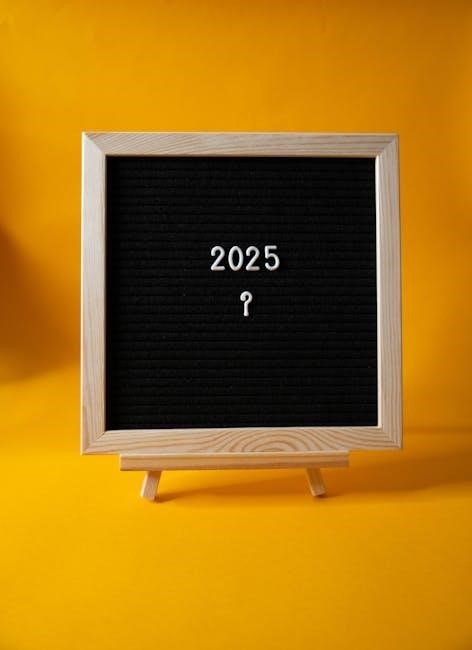Year 3 Maths Worksheets with Answers PDF: An Overview

Year 3 maths worksheets are designed to reinforce learning. These PDF resources offer a convenient way to practice key skills. They cover various topics and include answers for easy assessment.

Benefits of Using Year 3 Maths Worksheets
Utilizing year 3 maths worksheets enhances understanding. They provide structured practice and immediate feedback through answer keys. Worksheets help consolidate classroom learning, boosting confidence and paving the way for academic success.
Reinforcing Key Concepts
Year 3 maths worksheets play a vital role in solidifying foundational knowledge. They offer repeated exposure to essential concepts, such as number and place value, addition, subtraction, multiplication, and division. Regular practice with these worksheets helps children internalize these concepts more effectively.
By working through various problems and exercises, students gain a deeper understanding of mathematical principles. The worksheets provide opportunities to apply learned skills in different contexts, strengthening their grasp of the subject matter. The included answer sheets allow for immediate feedback, enabling children to identify and correct mistakes, reinforcing correct methods.
Consistent use of year 3 maths worksheets leads to improved retention and recall of key mathematical concepts. This solid foundation sets the stage for future success in more advanced maths topics, fostering a positive attitude toward learning and problem-solving. This builds confidence, allowing students to tackle more challenging problems.
Identifying Learning Gaps
Year 3 maths worksheets are invaluable tools for pinpointing areas where students struggle. These worksheets act as diagnostic assessments, revealing specific concepts that require further attention. By observing a child’s performance on different types of problems, teachers and parents can identify patterns of errors and areas of weakness.
The comprehensive nature of the worksheets, covering various topics within the year 3 maths curriculum, ensures that no learning gap goes unnoticed. The included answer sheets facilitate efficient marking and analysis, allowing for quick identification of problem areas.
Once learning gaps are identified, targeted interventions can be implemented. Additional practice, focused instruction, or alternative teaching methods can be employed to address the specific needs of the student. This personalized approach ensures that students receive the support they need to overcome their challenges and progress in their mathematical understanding. Regular use of worksheets helps track progress and adjust teaching strategies accordingly.
Developing Problem-Solving Skills
Year 3 maths worksheets play a crucial role in nurturing problem-solving abilities. These worksheets present diverse mathematical problems that challenge students to apply their knowledge in practical contexts. By working through these problems, children learn to analyze information, identify relevant concepts, and devise strategies to arrive at solutions.
The varied nature of the problems encourages creative thinking and adaptability. Students encounter different scenarios that require them to think outside the box and apply their understanding in novel ways. This process strengthens their critical thinking skills and prepares them to tackle more complex challenges in the future.
Furthermore, the inclusion of answer sheets allows students to self-assess their work and learn from their mistakes. By reviewing the solutions, they can gain a deeper understanding of the problem-solving process and identify areas where they need to improve. Regular engagement with these worksheets fosters confidence and resilience in problem-solving.

Key Topics Covered in Year 3 Maths Worksheets
Year 3 maths worksheets encompass number value, addition, subtraction, multiplication, division, fractions, measurement, and geometry. These topics align with the curriculum, ensuring comprehensive learning and skill development.
Number and Place Value
Number and place value are fundamental concepts in Year 3 maths. Worksheets focusing on this area help children understand the value of digits in numbers up to 1000. They learn to identify, represent, and estimate numbers using different representations, including numerals, words, and concrete materials.
These worksheets often include activities like partitioning numbers, ordering numbers, and comparing numbers using greater than (>), less than (<), and equals (=) signs. Children practice counting in multiples of 4, 8, 50, and 100, further solidifying their understanding of number sequences and patterns.
Additionally, worksheets may involve finding 10 or 100 more or less than a given number, which reinforces their understanding of place value and mental arithmetic skills. Through these exercises, children develop a strong foundation in number sense, which is crucial for future mathematical learning.
Addition and Subtraction
Addition and subtraction are core skills developed further in Year 3. Worksheets in this area focus on adding and subtracting numbers with up to three digits, using formal written methods of columnar addition and subtraction. Children learn to add and subtract numbers mentally, including adding or subtracting 10 or 100 from a given number.
These worksheets often include a variety of problem-solving activities, such as word problems, to help children apply their addition and subtraction skills in real-world contexts. They also practice adding two-digit and three-digit numbers, crossing 10 or 100, and subtracting two-digit numbers from three-digit numbers, crossing 10 or 100.
Through these exercises, children improve their fluency and accuracy in addition and subtraction, as well as develop their reasoning and problem-solving skills. They learn to estimate answers and check their working, ensuring that their calculations are accurate and reliable.
Multiplication and Division
In Year 3, multiplication and division are key areas where children expand their mathematical understanding. Worksheets focus on mastering multiplication tables, particularly the 3, 4, and 8 times tables. Students learn to recall and use multiplication and division facts to solve problems.
These worksheets often involve various activities, such as completing multiplication grids, solving word problems related to multiplication and division, and using arrays to visualize multiplication. Children explore the relationship between multiplication and division, understanding division as the inverse operation of multiplication.
They also practice multiplying two-digit numbers by one-digit numbers and dividing two-digit numbers by one-digit numbers, both mentally and using written methods. The worksheets reinforce the concept of repeated addition in multiplication and the idea of sharing equally in division. By working through these exercises, children develop fluency in multiplication and division, building a strong foundation for more advanced mathematical concepts.
Fractions
Year 3 fractions worksheets introduce children to the fundamental concepts of fractions, focusing on recognizing, understanding, and comparing simple fractions. The worksheets typically begin with identifying fractions of shapes, helping children visualize what a fraction represents. They learn to recognize and name fractions such as 1/2, 1/3, 1/4, 2/4, and 3/4.
Students practice finding fractions of quantities, like finding half of a set of objects or a number. Worksheets often include activities where children color in parts of shapes to represent given fractions or divide objects into equal groups to determine fractions.
Comparing fractions is another key skill developed at this stage. Children learn to compare fractions with the same denominator, identifying which fraction is larger or smaller. They also start to understand that two fractions can be equivalent, such as 1/2 and 2/4. These worksheets provide a solid foundation for future work with fractions.
Measurement and Geometry
Year 3 measurement and geometry worksheets focus on building a practical understanding of units and shapes. Measurement tasks involve reading scales, measuring lengths, mass, and volume using standard units like centimeters, meters, grams, and liters. Students learn to compare and estimate measurements, solving simple problems involving addition and subtraction of units. Time-related exercises include telling time on analog and digital clocks, understanding durations, and converting between units of time.
Geometry worksheets introduce various 2D and 3D shapes, focusing on identifying their properties. Children learn to recognize right angles and identify whether angles are greater or less than a right angle. They explore symmetry, identifying lines of symmetry in shapes and patterns. Activities involve drawing shapes, completing symmetrical patterns, and sorting shapes based on their attributes. These worksheets aim to develop spatial reasoning and practical measurement skills.

Features of Effective Year 3 Maths Worksheets PDF
Effective worksheets align with the curriculum and include answer sheets for easy checking. Differentiated levels cater to varying abilities. Clear instructions and engaging designs also make them highly beneficial for learning.
National Curriculum Alignment
Ensuring that Year 3 maths worksheets align with the national curriculum is paramount for effective learning. Worksheets that follow the curriculum precisely cover the required topics and skills for this age group, providing a structured approach to mastering key mathematical concepts. This alignment helps teachers and parents track progress.
By adhering to national standards, these worksheets ensure that children are learning the correct material at the appropriate developmental stage. Content is designed to meet specific learning objectives. This promotes a deep understanding of fundamental maths principles. The worksheets provide a solid foundation for future mathematical studies.
Curriculum-aligned resources also aid in standardized testing preparation. Students become familiar with the format and types of questions they will encounter. Consistent practice with these worksheets builds confidence and reinforces the skills necessary for success. This alignment is a cornerstone of quality maths education in Year 3.
Inclusion of Answer Sheets
The inclusion of answer sheets within Year 3 maths worksheets is an invaluable feature for both students and educators. These answer sheets provide a quick and efficient way to check work. This allows for immediate feedback and correction of errors. This immediate feedback promotes a deeper understanding of the material.
For students, having access to answer sheets encourages independent learning and self-assessment. They can review their solutions, identify mistakes, and learn from them without constant supervision. This fosters a sense of responsibility and self-reliance.
Teachers benefit from answer sheets as they streamline the grading process. They can quickly assess student performance and identify areas where additional support may be needed. This allows for targeted instruction and personalized learning experiences. Answer keys save time and effort, allowing educators to focus on lesson planning.
Answer sheets are an essential component, enhancing the effectiveness of Year 3 maths worksheets.
Differentiated Worksheets
Differentiated worksheets are crucial for catering to the diverse learning needs of Year 3 students. These worksheets are designed with varying levels of difficulty, ensuring that every child can engage with the material at their own pace. This approach recognizes that students learn differently. It avoids leaving anyone behind.
Providing differentiated worksheets allows teachers to address the individual needs of each student. Students who grasp concepts quickly can tackle more challenging problems, fostering their problem-solving skills. Students who need extra support can work on simpler exercises, building a solid foundation.
Effective differentiation involves offering a range of activities. These activities may vary in complexity, format, and the level of scaffolding provided. Some worksheets may focus on basic skills, while others require more critical thinking.
The use of differentiated worksheets promotes a growth mindset. It encourages students to embrace challenges and persevere through difficulties. It ensures that all students have the opportunity to succeed.